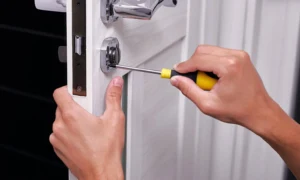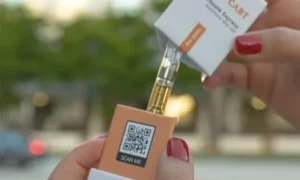In the realm of substance abuse testing, advancements continue to offer innovative methods for detecting the presence of alcohol in an individual’s system. One such method gaining prominence is nail testing for alcohol. This process, often referred to as a nail follicle test, provides a unique and comprehensive insight into an individual’s alcohol consumption patterns. In this blog post, we will delve into the intricacies of nail testing for alcohol, exploring the science behind it, its advantages, and how Rapid Lab Tests are revolutionizing this aspect of forensic analysis.
Understanding Nail Testing for Alcohol
Nail testing for alcohol involves analyzing the keratinocytes in the nail to detect the presence of ethyl glucuronide (EtG) and fatty acid ethyl esters (FAEEs), which are metabolites produced when the body processes alcohol. Unlike traditional methods like blood or urine tests, nail testing offers a longer detection window, spanning several months. This extended timeframe makes it an invaluable tool for monitoring chronic alcohol consumption and patterns of abuse.
The Science Behind Nail Follicle Tests
Nails grow at a relatively consistent rate, with the average human fingernail growing at approximately 3 millimeters per month. As the nail grows, it encapsulates the metabolites from alcohol consumption within its structure. To conduct a nail follicle test, a small sample of the nail is collected and subjected to laboratory analysis. Rapid Lab Tests utilize cutting-edge technology to extract and identify specific metabolites, providing accurate and reliable results.
Advantages of Nail Testing for Alcohol
- Extended Detection Window: As mentioned earlier, one of the primary advantages of nail testing is its extended detection window. Unlike urine or blood tests, which may only reveal recent alcohol consumption, nail testing can provide insights into a person’s alcohol use over the past several months.
- Non-Invasive Procedure: Collecting a nail sample is a non-invasive procedure, making it more acceptable to individuals undergoing testing. Unlike blood tests, which may cause discomfort or anxiety, nail testing is a straightforward process that requires only a small nail clipping.
- Difficult to Manipulate: Nails are difficult to tamper with compared to other specimens like urine. This makes nail testing a reliable method for detecting alcohol consumption, reducing the risk of adulteration or substitution of samples.
Rapid Lab Tests: Leading the Way in Nail Testing Technology
Rapid Lab Tests has emerged as a frontrunner in the field of forensic testing, particularly in the realm of nail testing for alcohol. The company’s commitment to cutting-edge technology and precision has set a new standard in the industry.
- State-of-the-Art Analytical Instruments: Rapid Lab Tests employs state-of-the-art analytical instruments to ensure the accuracy and reliability of results. These instruments are designed to detect even trace amounts of alcohol metabolites in nail samples.
- Efficient Turnaround Times: Recognizing the importance of timely results, Rapid Lab Tests has streamlined its processes to provide efficient turnaround times. This ensures that individuals and organizations relying on these tests receive prompt and actionable information.
- Comprehensive Reporting: Rapid Lab Tests doesn’t just provide results; they offer comprehensive reports that are easy to understand. This commitment to clarity ensures that individuals and professionals interpreting the results can do so with confidence.
Navigating the Nail Testing Process
If you or someone you know is facing a nail testing procedure for alcohol, it’s essential to be prepared. Here’s a step-by-step guide to help you navigate the process:
1. Understanding the Test Objective: Before undergoing a nail follicle test, it’s crucial to understand why the test is being conducted. Whether it’s for employment screening, legal matters, or personal reasons, knowing the purpose of the test can provide context for the results.
2. Choosing the Right Testing Facility: Selecting a reputable testing facility is paramount. Ensure that the facility follows industry standards and uses reliable methods, such as those employed by Rapid Lab Tests, to analyze nail samples.
3. Collecting the Nail Sample: The collection of the nail sample is a straightforward process. A small clipping from the fingernail is typically sufficient. The collected sample is then sent to the laboratory for analysis.
4. Waiting for Results: Patience is key after the sample is submitted. While Rapid Lab Tests aims for swift turnaround times, it’s essential to allow the necessary time for accurate analysis.
5. Interpreting Results: Once the results are available, they will be provided in a comprehensive report. Understanding these results may require professional assistance, and Rapid Lab Tests ensures that their reports are designed for easy interpretation.
Nail testing for alcohol, facilitated by advanced technology and reliable laboratories such as Rapid Lab Tests, offers a comprehensive and insightful method for monitoring alcohol consumption patterns. Its extended detection window, non-invasive nature, and resistance to manipulation make it an attractive option for various applications, from legal matters to workplace screening.
As the landscape of substance abuse testing evolves, embracing innovative methods like nail testing becomes crucial. With companies like Rapid Lab Tests leading the way, individuals and organizations can benefit from accurate, timely, and clear results, contributing to a safer and healthier society.








































